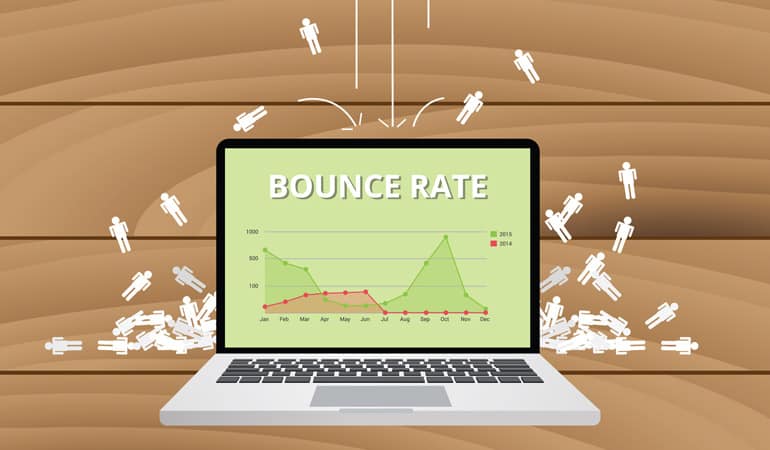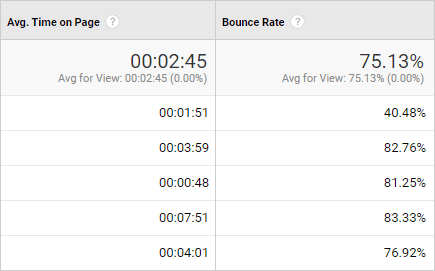I spend a LOT of time studying Google Analytics and overall bounce rate isn’t a particularly helpful metric because it takes into account ALL the pages of your website, including any hidden pages and landing pages (basically any page that has the Google Analytics tracking code on it will be included in the overall bounce rate calculation.
You’re better off digging further into the data and looking at the bounce rate of individual pages (Behavior -> Site Content -> All Pages) but even then I would say don’t stress or obsess over it because a high bounce rate could indicate that people found what they were looking for easily and didn’t need to visit any other pages.
What can be useful is to compare the bounce rate of similar pages and see if there are any unexpected discrepancies – this could indicate a problem which might be something as simple as a badly worded headline, or it could be something seriously wrong that has gone unnoticed by you but evidently not unnoticed by your website visitors.
You will often find that landing pages have a high bounce rate but that doesn’t necessarily mean they’re not good landing pages! In my opinion the more useful metric is Average Time on Page – a higher average time on page tells you that people are finding your content informative, engaging and helpful and it signals the same to Google which should eventually translate to a boost in organic ranking.
Of course, a short landing page which fulfills the visitor’s intent (e.g. they opt in for a free report and navigate to another page quickly) might have a low average time on page so you need to take these factors into consideration when determining whether or not the page needs improvement. If the page is converting well (e.g. getting a good percentage of opt-ins) but has a low average time on page then it’s not a problem!
If you genuinely think your bounce rate is higher than it should be then you need to delve deeper in Google Analytics and also run some tests such as Test My Site at ThinkWithGoogle.com. It could be that your site isn’t very well optimized for mobile or is taking too long to load. It might even be that your opt-in form is completely unusable on mobile – you’d be surprised how common this is and obviously if the majority of your website traffic is mobile then that immediately excludes a massive amount of potential leads.
You might think you have a high bounce rate when in fact your bounce rate is perfectly normal or better than your competitors.
Take time to delve into your Google Analytics data and compare it with previous periods, and similar pages. Look for anomalies as they can often help you to identify problem areas on your site. Interpreting Google Analytics data is a challenge and you have to be careful you don’t jump to the wrong conclusions!
Also, beware if you’re using the Monster Insights plugin for WordPress as I’ve seen that display bounce rate data that is blatantly wrong and completely misleading!
This article was originally published in Paul Gough’s Cash is King Newsletter in March 2020









